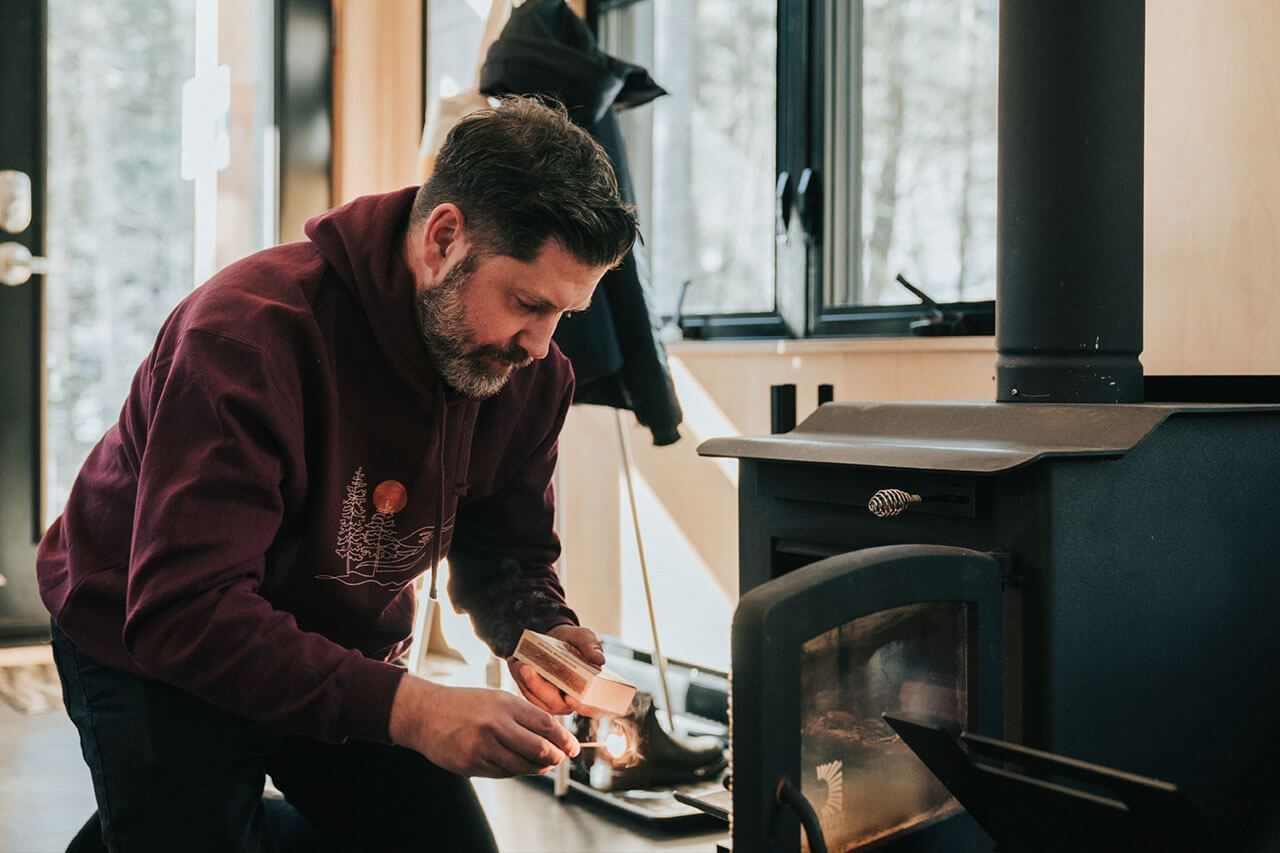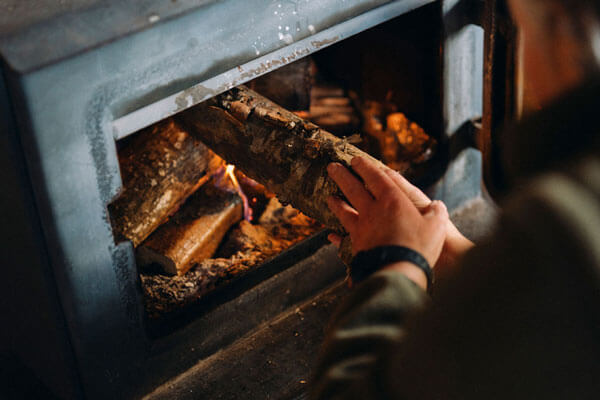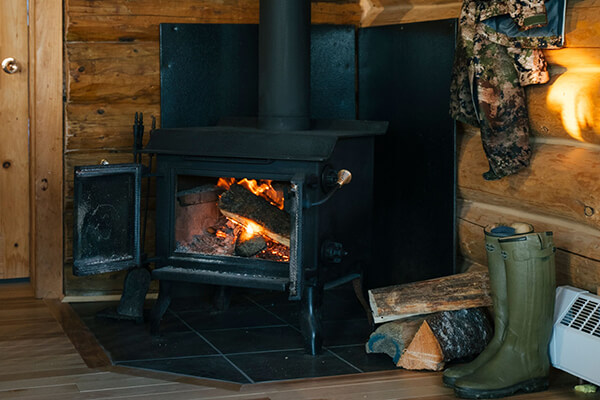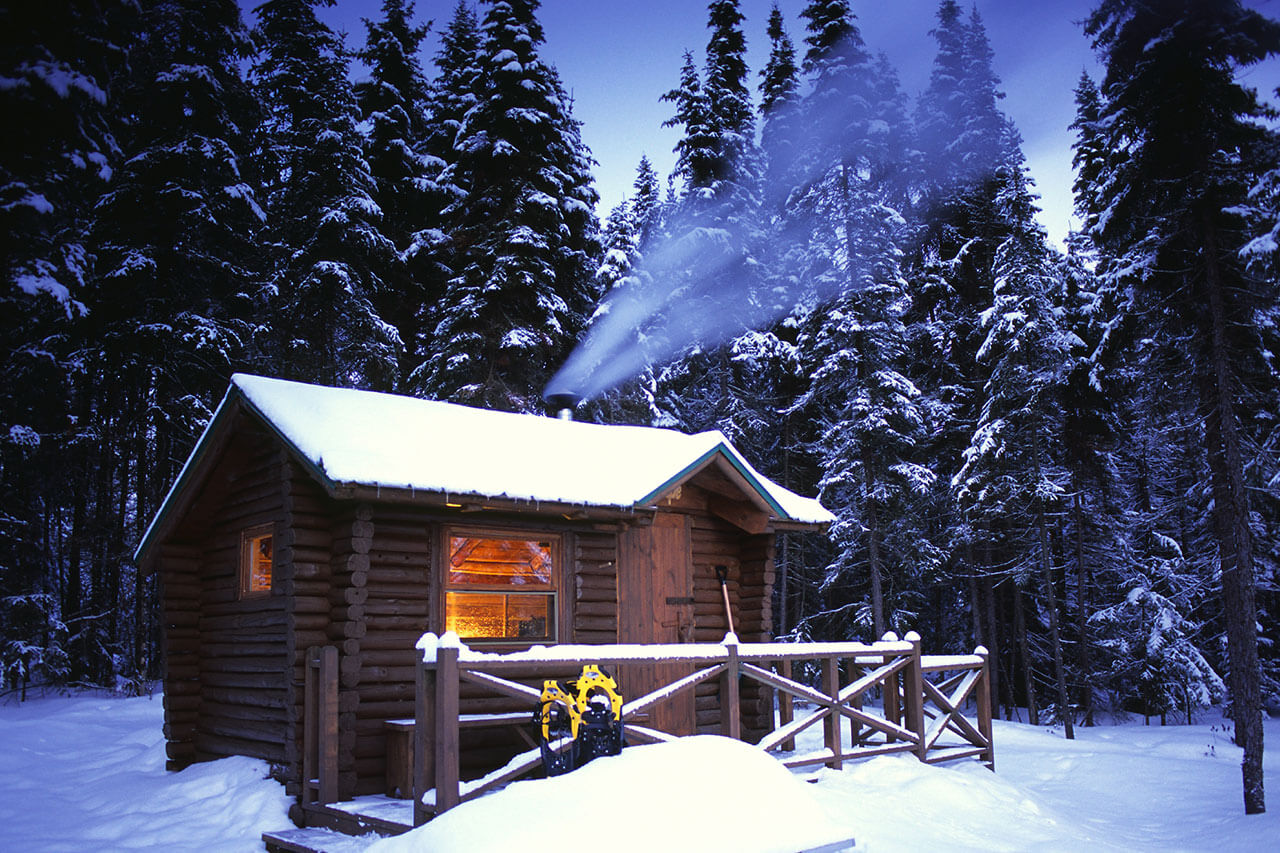Wood stoves and propane fireplaces
How to enjoy them with complete peace of mind
An essential part of the cabin stay experience, the wood stoves and propane fireplaces that keep vacationers comfortably warm are invaluable allies after a day in the great outdoors. They’re faithful companions that require only a minimum of attention to maximize their benevolent presence in complete simplicity and safety.
To help you appreciate these heating systems and understand how they work, here's a handy guide.
 Parc national de la Jacques-Cartier
Parc national de la Jacques-Cartier
Ensure ventilation in the cabin to start with. Slightly open a window (1 or 2 cm) while the stove is in use. Use the stove's key to open the air intake. This may be in the form of a rod to move or a wheel to unscrew. Opening the air intake this way is the key to oxygenating the flame more and speeding up combustion. Closing it has the opposite effect.
To light the fire, place two logs side by side, about 10 cm apart. Place the firelighter or crumpled paper in the centre. Add one or two logs perpendicularly above. Ignite the firelighter or the paper.
To give the flame time to burn properly, keep the stove door ajar by 2 to 3 cm for 5 to 10 minutes. This important step will also allow the chimney to warm up. You'll need to keep an eye on everything to make sure the process is unfolding as it should.
Once the fire is burning bright, close the door to slow combustion and maximize heat diffusion. If necessary, add logs and experiment with the key, twisting and turning it to optimize the stove's performance by modifying the air flow.
Propane fireplace operation
Easier to ignite, the propane fireplace is controlled directly from a wall-mounted thermostat. Simply turn the temperature up or down to adjust the fireplace. That's all there is to it!
In some cases, the fireplace can also be controlled by a timer on the wall. Again, it's very simple: you select the desired operating time for the fireplace. To stop it, simply set the timer to zero.
Note that under no circumstances should you handle the controls underneath the fireplace.
Propane fireplace: myths and realities
Toxic propane?
When used with properly maintained and installed equipment, propane is a practical and safe fuel. Non-toxic in itself, and widely used throughout the world for a variety of applications, this gas can sometimes give the impression of being dangerous because its poor combustion can lead to the production of carbon monoxide (CO), which is toxic. Hence the advantage of booking cabins in national parks, wildlife reserves, and outdoor establishments, where you can be sure that the equipment in place is easy to use, of high quality, and well maintained. And as an extra safety net, the presence of CO detectors adds to your peace of mind.
Imperceptible leaks?
Naturally colorless and odorless, propane would pass unnoticed in the air were it not for the addition of a rotten egg or boiled cabbage odor to facilitate detection in the event of a leak. There's no doubt that with such unpleasant smells, any problem will be quickly detected. Heavier than air, propane accumulates at ground level and only becomes flammable when its concentration in the air is between 2.4% and 9.5%, i.e. at a higher concentration than gasoline.
Fear of an explosion?
Although the combustion of a gas always presents a potential risk of explosion, the use of propane remains very safe and widespread. Firstly, because modern propane equipment is well-designed to meet strict safety standards. These amenities include fireplaces, but also the various supply pipes that run through buildings, as well as outdoor tanks. The operation of propane equipment is designed to be simple, leaving little room for operator error. If necessary, precise instructions will be clearly indicated, often on the appliance itself.
General recommendations
- Ventilate the area where the unit is in use.
- Ensure suitable clearance around these devices to prevent material damage and burns – and keep a close eye on the kids!
- Never cook with heaters, unless specifically indicated.
- Use only the proposed fuel: in the case of a wood stove, burn only the natural logs supplied or the ecological alternative proposed.
Avoid going overboard: don't overload the stove with wood or keep the propane fireplace at maximum output all the time. - Watch for indoor smoke, unusual flames, or the smell of gas. If in doubt, stop using the stove or fireplace and ask an individual in charge of the accommodation to pop by. In the meantime, ventilate well and leave the premises if necessary.
- Locate working carbon monoxide and smoke detectors: they're there to protect you.
- Locate the extinguisher and use it only in the event of an unwanted fire outbreak. With your back to an exit, aim at the base of the flames.
- In the event of fire, calmly ask all occupants to leave the premises and contact the appropriate authorities without delay.


